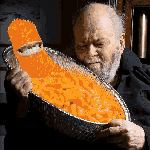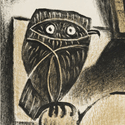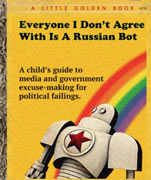|
No, they're completely independent. It doesn't work anything like the zapping system in RE2 Original Flavour, it's just a secondary scenario where you go through all the same stuff but slightly remixed. Nothing you do carries over in either direction.
|
|
|
|

|
| # ? May 9, 2024 19:29 |
|
Been playing A Plague's Tale all day and it's a pretty good mix of horror, stealth and environmental puzzles.
|
|
|
|
Currently watching someone play through Yuppie Psycho. Actually looks pretty entertaining so far. Social Commentary.
|
|
|
Kokoro Wish posted:Currently watching someone play through Yuppie Psycho. Actually looks pretty entertaining so far. Social Commentary. It's actually pretty charmingly bizarre, and is not as clunky to play as the studio's last offering. Mind you, it's still a bit clunky to play, and the save system is patently stupid, but the game makes up for it most of the time.
|
|
|
|
|
Still super looking forward to this https://twitter.com/kroskiewicz/status/1116045412870311936
|
|
|
|
Old Boot posted:Still super looking forward to this Instantly felt squeemish when I noticed the tongue/tentacle following the cursor arround
|
|
|
|
Old Boot posted:Still super looking forward to this Yeah, had my eye on this one since inception. Playing as the body horror beast is absolutely my jam.
|
|
|
|
MockingQuantum posted:It's actually pretty charmingly bizarre, and is not as clunky to play as the studio's last offering. Mind you, it's still a bit clunky to play, and the save system is patently stupid, but the game makes up for it most of the time. Count Lucanor had a terrible save system as well. I lost 40 minutes of progress about 10% into the game and although it was a solid experience up until that point, the idea of trial & error'ing my way through some block puzzles again keeps me from picking it back up. It adds nothing to have a trash limited save system. I don't feel like I'm being challenged, I feel like someone is trying to prevent me from having fun. Take my situation above: so I should've at one point, after a puzzle, said "Alright, let me travel all the way back to the save point, use a limited resource to save, and worry about whether or not I'll have enough going forward." So I don't, then I die shortly after. I don't feel added tension, I don't feel like there's an added challenge. I just feel like the game is being a dick so I stop playing. What I'm asking with this rant is: anyone got a different POV on limited save systems? When do they work in favor of the game? Even in Resident Evil, I couldn't stand them, although they were plenty generous with the ink ribbons. But that begs the question: why even make them limited at all?
|
|
|
|
The only limitation I'm ok with is having save points instead of save anywhere. Limiting how much you can save outside of specific challenge modes is kinda lovely IMO and honestly doesn't really contribute to the mood of horror. In fact I find that having to repeat bigger amounts of the game because you couldn't afford to save is actively detrimental to horror.
|
|
|
|
It’s tense and immersion building when it works, but the second you lose two hours to some bullshit because you didn’t have any ink ribbons, is when you turn the game off and go back to Civ 5 which would never betray you like that.
|
|
|
|
Bogart posted:It’s tense and immersion building when it works, but the second you lose two hours to some bullshit because you didn’t have any ink ribbons, is when you turn the game off and go back to Civ 5 which would never betray you like that. So this is why I refunded Yuppie Psycho. I hadn't saved after that awful owl/bookshelf boss and rather than bothering to do that poo poo again I quit the game and refunded it. No regrets. I can understand save points, but restrictive save points as well as having to find items to activate them too is just too much. ION playing A Plague Tale: Innocence which only came on my radar a couple of days ago, and I'm really enjoying it. It's not horror enough for my liking, but it's a solid third-person adventure game.
|
|
|
|
Lifeglug posted:So this is why I refunded Yuppie Psycho. I hadn't saved after that awful owl/bookshelf boss and rather than bothering to do that poo poo again I quit the game and refunded it. No regrets. Can't believe he did it again.
|
|
|
|
when it comes to limited saves, i like the mix of save points plus soft saves so you can save as much as you want at save points, but if you are mid dungeon or something, you can do a soft save that's deleted on reload, so that the experience of traversing through the area in one go is preserved as much as possible
|
|
|
|
Guy I'm watching is pretty not that good at games by the look, but hasn't had those kinds of problems with the saves I see here. As long as you search, ink and pages look pretty plentiful, and you can even buy ink from a vendor later.
|
|
|
|
Can someone tell me how Puppet Combo games are to actually play? They look cool, but I've seen a bunch of them in video and like, especially the nun one, it seems like a lot of those games lean way too heavily into their visual style to the detriment of readability. It seems like in actual gameplay you spend a lot of time staring at blurred pixels followed by something shrieking and running at you at exactly the speed your character moves and if you don't instantly react by running away down incredibly narrow hallways without getting caught on anything (everything is extremely narrow and cramped for some reason) you just die before you even know what happened.
|
|
|
|
I've watched a bunch of videos after reading about them here, so I think I can answer that. The games are mostly very, very short and have simple gameplay, or sometimes not even any real gameplay at all. It's not difficult to play them because there is usually only one thing to do or one place to go. Puzzles, as far as they even exist, are very simple. In general, they're fairly limited to what you describe there, but that's apparently also the point.  The games are largely held in a "pastiche 80s horror" style, which includes low resolutions and strong filters, but these tend to go away when it comes to reading on-screen text. When it comes to show you things that contain important information, the developer has been willing to cut away from the style and stick to readability. Everything will look like it's run in 480i, but things will stay readable.
|
|
|
|
Glagha posted:Can someone tell me how Puppet Combo games are to actually play? They look cool, but I've seen a bunch of them in video and like, especially the nun one, it seems like a lot of those games lean way too heavily into their visual style to the detriment of readability. It seems like in actual gameplay you spend a lot of time staring at blurred pixels followed by something shrieking and running at you at exactly the speed your character moves and if you don't instantly react by running away down incredibly narrow hallways without getting caught on anything (everything is extremely narrow and cramped for some reason) you just die before you even know what happened. The games vary greatly. Nun Massacre and Stay out of the House (which will be the first "full length" game releasing on Steam) are probably the most polished of the games: they're perfectly readable despite the visual style because it's very sparsely cluttered, important objects glow with a lens flare effect, there's a delay between when the villain spots you and gives chase, and you can close the gap on the villain as long as you don't run into a dead end. The games are intentionally startling so most people panic when they run into the villain and die instantly. The Glass Staircase is an outlier since it's designed like Resident Evil. 90% of it is a slowly paced adventure game with the last bits being tank controls combat but after a patch it's really generous with auto-aim and checkpoints. Feed Me Billy and Riverside Incident are also outliers as they're short narrative games. Then on the lower end of the scale are a ton of third person action games. Nightripper is the best of them, but there are a few wonky areas that rely on precision platforming. Babysitter Bloodbath is one of the earlier games so it's very janky, especially how you're supposed to fight the villain, but it's also generous with saves if you've ever played a Resident Evil with ink ribbons. There's a stealth game I forgot the name of but you play the killer and it's just a novel little Metal Gear murder everyone game. Santa Massacre and Power Drill are pretty terrible. The Santa one is nothing but precision platforming and weird bottomless pit drops, and Power Drill is the game that's straight up what you described: impossible to read with a shrieking villain that runs faster than you and kills you instantly. There's another older one I forgot where you're a bunch of Japanese schoolgirls running through terrible death traps with fixed cameras, that can be ignored as well. I think it's worth pitching $5 to the Patreon. You'll get almost everything in the backlog and you can cancel your pledge if you don't want to continue. Dude makes solid and interesting 1-2 hour long projects that are pretty different from each other almost every month or so. In a market where AAA devs have abandoned horror and most indie devs can't escape PT/FNAF/Slender, Puppet Combo ends up being the Troma of horror: some of it is garbage, some of it is pretty good, but it's all pretty interesting and I like to support that hustle.
|
|
|
|
yeah puppet combo fuckin rules
|
|
|
|
al-azad posted:Puppet Combo ends up being the Troma of horror: some of it is garbage, some of it is pretty good, but it's all pretty interesting Has anyone here played The Padre yet? It's this new voxel-game looking third person survival horror-ish game on Steam that reminds me a whole lot of Alone in the Dark, but with more humor. You explore a haunted mansion and everything is made of cuboids, that kind of thing. I watched an hour-long demo playthrough by MrKravin and I find the whole thing very charming, but at 20 bucks I really want to know what other people think before I spend the money.
|
|
|
Kokoro Wish posted:Guy I'm watching is pretty not that good at games by the look, but hasn't had those kinds of problems with the saves I see here. As long as you search, ink and pages look pretty plentiful, and you can even buy ink from a vendor later. Yeah the actual resources aren't necessarily hard to find, though I'm fairly sure what you get from containers is semi-random, as I got different things from a couple of containers after I died once, and somehow ended up with no ink for a decent stretch (around the aforementioned bookshelf boss) so I ended up having to waste a shitload of time wandering back and forth between the new area and a different floor in order to be able to save. I was never short on Witch Paper, the problem with this system is less about the scarcity and more about uncertainty. Sure, I have six Witch Papers now, but what if that's all I get for the rest of the game? That seems unlikely, but having played Count Lucanor, I know this dev is not exempt from making inexplicably terrible design decisions in a game that's otherwise fine. Also just the fact that there's even a save point system is a frustration. I can't remember the last game I played with a straight-up save point, no autosave, no continues, no retries on boss fights, etc etc save system, but I can practically guarantee it hasn't been in the last 8-10 years. I'm sure there have been some in that time, but I can't think of any. Including this kind of system doesn't contribute to the tension of the game for me, I knew it would be loving annoying right from the moment I saw it. Sure, I lost time because I didn't think to save and that's kind of my own fault, but I also blame the game for including an antiquated system like that after I haven't had to think about save points for the last decade.
|
|
|
|
MockingQuantum posted:Sure, I lost time because I didn't think to save and that's kind of my own fault, but I also blame the game for including an antiquated system like that after I haven't had to think about save points for the last decade. Is this something that the developer can be yelled at into fixing?
|
|
|
|
|
When a game has checkpoints or save points these days, it typically means that the game progression is structured around them. You can try, but I wouldn't have too many expectations that it'll work.
Cardiovorax fucked around with this message at 17:14 on May 15, 2019 |
|
|
Skyscraper posted:Is this something that the developer can be yelled at into fixing? I'd like to think so, but possible and likely to happen are two very different things when you've got a tiny development team.
|
|
|
|
|
Horror Replay Tension: some notes So it's hard to make a horror game with replay value. A lot of horror design depends on surprise and novelty, which is in tension with player agency, learning, and mastery. What are some game features that encourage longevity and replay, while maintaining horror? These bullet points (which overlap heavily with "make your horror game not suck") are some ideas I had for this form.
In conclusion, horror is a land of contrasts. I think it's possible to greatly improve this list by drilling down more on some of these points and adding others. What do y'all think of it? Discendo Vox fucked around with this message at 20:16 on May 15, 2019 |
|
|
|
Assuming that we aren't going for infinite replayability the easiest way is probably having multiple difficulty levels that feed into each other but has differing enemy layouts. Match the difficulty curve so that a player that finishes the game on one level should be able to start on the next. The different layouts/groupings of enemies often provide enough variety that you aren't sure what us actually there or conversely enough surprise if you assume you do. I think my go-to example is a room in the last chapter of RE revelations 2, on normal it's just a room with enemies in glass tubes and if you don't shoot them they won't activate, but on higher settings there are other enemies in the room as well. Enough has changed and it's a bit riskier, especially if you just assume it's no big deal based on your last time through.
|
|
|
|
I would say that a lot of these are good practices for any kind of horror game, especially the bottom five. Even without replayability mind, they add a degree of uncertainty and force flexible evaluation and problem solving where simply looking up a solution would otherwise be able to provide an easy answer to everything. The idea of system opacity and false intelligence are particularly essential for good atmosphere. There's a very good reason why survival horror has always trended away from clearly readable health values on yourself or your enemies. Never knowing quite exactly how far you can push things creates great tension without necessarily creating greater difficulty, which is an excellent trade-off. Equally, enemies who even just lightly mimic intelligent behaviour do so much to prevent the common feeling of hostiles being just mobile obstacles. Horror lives and breathes atmosphere. Enemies that feel alive, even when they aren't, add more to this than nearly anything else a game can do, because interacting, avoiding and defeating enemies will always be the main focus and the most important thing on the player's mind.
|
|
|
|
a horror game, if it is to stay scary, should have at bare minimum: skeletons, ghouls, spiders and big sticky spiderwebs, ghosts, a pumpkin
|
|
|
|
Yeah, a lot of these are elements that undergird the distinction between, what I guess we'll call a haunted house versus an horror game- systems that involve player cognition, learning, mastery, and interaction (that being a really unfair simplistic framing, walking sims are a legit game form, etc, but talking about the replay value thing in this case). Regarding difficulty settings, I agree, but I think these still work best in an episodic framework, and/or where there wind up being heavy content and narrative differences or additions as you go up in level. This gets into a much messier, broader discussion of difficulty in games as a whole. In horror, at least, there's definitely an upper bound mastery situation where you're just dunking on all these zombies/skeletons/killers all the time as you hone your twitch speedrun. How much of that mastery/system control you should design and account for, is perhaps an open question. One IP that we didn't discuss previously in this regard is the Siren games. They're real outliers! What do or don't they contribute with their weird nonlinearity, bite-sized levels, space reuse and extremely variable difficulty? edit: a horror game, if it is to stay scary, should have at bare minimum: co-op, a sewer level, equipment upgrades, children laughing, dead  , ,audio logs, an unresolved ARG plot thread that depends on brute force deryption and/or morse code Discendo Vox fucked around with this message at 21:02 on May 15, 2019 |
|
|
|
quote:One IP that we didn't discuss previously in this regard is the Siren games. They're real outliers! What do or don't they contribute with their weird nonlinearity, bite-sized levels, space reuse and extremely variable difficulty? Where Resident Evil is all about survival, Siren is all about unravelling the secret of that nightmarish place you find yourself in. The small and heavily reused levels aid in this - due to the small scale of the game, there is an incredible density of detail. Multiple characters who go through the same area with different goals encounter different problems and discover different clues, which makes it feel more deep and fully-formed. Because you can watch the same places you've seen before slowly transform into more and more alien and outlandish shapes, you feel more like this is a real place, in which things keep happening even when you are not playing. The shibito act in that false intelligence you described - they have a clear goal and they're working towards it, you can see it happen. Unlike many games, Hanuda Village feels like a place where people really lived and still live, not just like a hollow paper maché stage that you pass through as you go through the stations of the plot. The variable difficulty I'm personally putting down to inexperience, especially in the first game. It doesn't feel intentional in some places, because the scenarios that work the most smoothly and most intuitively are also typically the easiest and least frustrating.
|
|
|
|
I'd agree on the difficulty except (and this is based on the LPs, I only played the first one) Siren 2 is even more all over the place with difficulty, and some of it matches what character you're playing. I'm very interested in building out a game design concept set that lets the player simultaneously embody individual PCs and also "unravel the mystery" of the game as a whole, as you put it. I'm trying to think what games do that well, preserving that sense of embodiment- including outside of horror.
|
|
|
|
Squidtentacle posted:I'm very happy someone else mentioned Hellnight. Like Juggernaut, that's another old, weird game that really stands out for doing some unique stuff. you're literally the only other person I've met who has played this game
|
|
|
|
Hellnight had some pretty great music, it was very atmospheric and gave me minor Yume Nikki vibes since most of the tracks are shorter loops. Except Leno's theme which is just rad for being such a short loop.
|
|
|
|
Overblood is a horror game that isn't really that scary but it is very underrated imo and I wish more people had played it or seen it because man that game is just charming.
|
|
|
|
FirstAidKite posted:Overblood is a horror game that isn't really that scary but it is very underrated imo and I wish more people had played it or seen it because man that game is just charming. PIPOOOOOOOOOOOOOOOOOOOOOOOO
|
|
|
|
I think Google must reading my browsing habits. I just started getting recommendations for Overblood videos. I had never even heard of that game before.
|
|
|
|
Cyberdud posted:PIPOOOOOOOOOOOOOOOOOOOOOOOO RIPipo
|
|
|
|
Vox's Manhunt 3 fanfiction, short version Puppet Combo meets Hotline Miami meets Siren. Imagine a whole bunch of puppet combo games similar to stay out of the house. Each "tape" (i.e. level) has a set environment, Victim, and Killer who have their own traits, disabilities, and abilities that players must learn to safely escape. These include both scripted and dynamic, semirandom killer behaviors (for example, the nastier, smarter killers might pretend they don't know where you are and set up an ambush around the corner). Players also have their own attributes and disabilities (they might walk with a bad limp, or be blind in one eye). Progression is nonlinear and partly based on film "ratings". This occurs both through success (0 stars, can't believe the killer never even saw her) and failure (4 stars, that was a great kill, shoulda taken longer chasing her down, I love the look in their eyes, lol). As your film "library" grows, the medium switches upward in tech from betamax through to underground webstreams. Oh, and the whole game is an intersectional feminist critique of power dynamics in society as reflected in consumption of mass media. Vox's Manhunt 3 fanfiction, longer version You wake up on a dirty mattress in the corner of a small concrete room. Emerging, you find yourself in what appears to be a squalid, abandoned homeless encampment in some sort of burned out industrial structure. Looking down (you are fully embodied) or checking a mirror in a torn up locker room reveals you are a very thin, plain caucasian woman wearing the dirty, worn clothes of someone who has had to become accustomed to sleeping rough. Your most striking feature is a scar across your upper lip indicating an improperly corrected cleft palate. You carry a small, empty backpack. Exploring what appears to have been a manufacturing floor (possibly for garments, there’s a huge pile of discarded sewing machines in one corner), you come across an exit door. Getting close reveals that it has been locked and boarded up. In that instance you hear the sound of smashing glass and laughter from across the room. A man wearing a crudely spray-painted ski mask and covered in white supremacist tattoos is running toward you, wielding a nailgun and whooping. Basic Gameplay Your player character, the Victim, must avoid and ultimately escape from the Killer. To do so, you may also have to perform specific tasks such as retrieving an item, opening a door or incapacitating your stalker, across a range of environments. The environment, victim, killer and objectives are static for each level. However, the Victim and Killer are not generic- both select from a range of "stars" which serve as the core of the game. More about them later. Player information systems The main game has no visual HUD in gameplay. aside from very short text object descriptions from the victim’s perspective. Aside from equipping or dropping items, item interactions are generally performed in the game space in real time, using awkward physical manipulation of tools. Instead, all inventory and actions occur during the pause screen, in which inventory, health, “tape” (level) name and objective appear in an interface designed to resemble the settings screen of an age-appropriate, clunky late 80s VCR. Ingame, other gameplay information, such as player stamina, health, equipped weapon and enemy aggro state are conveyed by a combination of visual cues on the player model, audio cues (heavy breathing, etc) and tracking errors on the tape. The Menu After your first "tape" ends, live or die, your perspective zooms out from a CRT television placed on a desk in an otherwise dark, empty room. The only other features are a chair close to the desk, and a set of large, heavy wooden doors. A Betamax tape ejects from the attached VCR and you (a white, hairy hand covered in rings) remove the tape (“Shelly gets Nailed”) and move to place it on a large, mostly empty collector's shelf over to one side. The tape will soon be one of many. You are building an oeuvre...and building a business. From this menu space, you are free to select other tapes in your collection. Selecting a tape lets you look at it closer before beginning the level. Some tapes will have a decorative sleeve or cover. Every tape will have something else on it, though- a chintzy sticker showing film ratings. Film Ratings Film Ratings are this game's scoring system. Scoring is based on a five star review setup. More exciting films (chases, traps, sudden reversals, deaths, and, ultimately, the death of the victim) grant more stars. Less exciting films (the victim escapes without injury or even being seen) get lower reviews. Each level has two scores associated with it on the label- the "top review" and "bottom review". Short review quote blurbs indicate what is missing top improve each score, as well as providing flavor about the level. Game Progression Completing tapes (either by surviving or dying) will unlock more on the shelf. However, good reviews provide additional benefits for your business. Once you have enough "hits", and new screens and equipment begin to appear. Later levels may play off of Laserdiscs, DVDs, and eventually livestreams, on better screens (which also faintly light up the room a little more). At the same time, new levels will be unlocked by successful victim survival. You can't shoot another film with Shelly if she's dead, after all. In this way, progression is both tied to successful and unsuccessful completion, encourages use of different characters, and is both linear and nonlinear. Tapeovers At seemingly random points ingame, the view will glitch out (as if something was recorded over, or some equivalent effect for other media "types"). These show very short voyeuristically shot feeds of the characters as they were/are before they found themselves in the game setting. Notably, these characters will not display all the features they do in core gameplay; Shelly might be seen working a degrading job in fast food, for instance. The Star System There are no audiologs or notes scattered across the levels of Manhunt 3; instead, players must figure out what is going on from the descriptions provided by Victims, by the rantings of Killers, and by the implications of their environment. The Star System identifies the Victim and Killer (or Killers) in the game, and deeply informs both gameplay and plot progression. Players learn the traits of individual Victims and Killers, and these traits intersect with level design to produce the gameplay environment, themes, and the learning and mastery systems of the game. I'm going to give a bunch of examples here because they do a lot of the game's design work. Below I have a small set of the larger list of ones I've drafted. Victims always appear alone. They frequently have some form of injury or disability that significantly effects their mobility, their ability to use items, where they can fit, or some other gameplay function. Victim traits are reinforced by what they wind up able to do in their levels (e.g. the example victim below will never ever find a weapon they can use). Shelly Shy, extremely thin young caucasion woman in filthy clothes; appears homeless. Keeps arms covered for reasons never directly stated. One of two Victims on the list that might call out to a Killer for help at first. Disabilities: Speech impediment. Cleft palate. Physically weak, takes longer to use heavier tools. Traits/abilities: Small, quiet, very fast. Hanna Athletic African American woman with damaged milsurp clothes. Disabilities: Burn marks. Blind in one eye. Not very quiet, small or fast. Traits/abilities: Able to craft booby traps, use firearms effectively (she almost never gets any for this reason). Can carry additional items. Generally allows for very different scenarios. Plot elements: Hanna has the most training and ability of any of the victims Kevin Very young character, 11, 12 showing symptoms of trauma from the start. Text descriptions communicate fear, powerlessness. Disabilities: frequent pain, undersized (stunting). Unable to attack, physically weak. Traits/abilities: Able to hide effectively. Plot elements: Calvin is self-evidently abused to a much greater degree than other protags. He does not directly learn plot elements and sees little "screen time" in the middle game. Killers appear alone until late game, where rules start to bend and break. Learning how killers respond and behave, what they will and won't do, is crucial to survival. Killers are, with very few exceptions, loud and vocal, directly indicating their mental state (or sometimes lying aloud to try to trap the player). Some actively search, others wander, some follow a set routine, others are easily distracted. Learning these semi-obscured behaviors and adapting to them represents one aspect of player skill development, in addition to learning the maps and getting to know the tools and player disabilities. Biker Prepared, focused hunter. Wears heavyish biker gear, fluorescent helmet. Swaps to all black leather padded outfit, helmet eventually. Special Features: Never speaks. May spawn with severely overpowered combat shotgun. As with all guns, has limited ammo. Strengths: More durable than most killers. Sets booby traps near objectives and either lies in wait or attempts to flush target. Weaknesses: When not specifically listening/looking for player, has low awareness. Not very quiet, not very fast. Has limited chase AI. No deceptive behaviors. Themes: "taking this seriously" - character pursues and approaches task role with focus, offers little plot information until the very endgame. Charisma Psychotic killer with hidden depths, major progression figure with multiple "forms". Resembles tattooed anarchic cult leader- Koresh meets Manson. Begins with mask, stops wearing it later on. Reactive and power-focused without bigotry elements. Counterbalance to other such characters, player model proxy. Special Features: More complex, variable state AI. Appears frequently. "toys" with players. Behavior: Starts with "toying" state, can switch to "serious" state which drops most clear tells and weaknesses, but becomes more reactive. "toying" is largely unique in that he sometimes lets protag go. Sets ambushes and is generally a dick, until he gets serious, at which point he becomes much more dangerous, angry and quiet. Appears later on with backup, "followers". Strengths: Able to move very quickly, set up midlevel ambushes. Uses knife at first, transitions to machete in melee, eventually gun. Can take other weapons from environment when scripted to. Weaknesses: When "toying", overly reactive, speaks too often, lets protag go. In later stages, begins in semi-serious state. Becomes much bigger threat over time. Themes: Charisma revels in his power over others. As the game progresses, this shifts from direct power over victims (an embrace of the tape scenario) to a toxic, intense codependence on his followers in an attempt to reject the power that the scenario has on him. Poncho Relatively weak killer who becomes a follower of Charisma. Wears poncho, bandages, mannequin mask. Uses a relatively weak knife, later gets a cordless power drill as a follower. Eventually called by her own name by "team members". Useful for player training. Special Features: None, other than being relatively fast and small. Able to chase players into areas some other antags can't. Behavior: Reactive, fast, capable only of limited ambushes and random wandering. Loud, but does not speak intelligibly. Themes: simple character with limited attributes beyond incoherence. Here's the thing about the Star System: it's strategically misleading. It presents characters as simple categories of rules that remain static across the game. This is a lie- the characters shift in behavior and ability as the game plot progresses and they are traumatized or learn about their situation. For example, Charisma shows increasing awareness and eventual violent rebellion against the scenario of the game, gaining knowledge of the situation. This leads him to "recruit" other killers and get them to stop wearing masks as they hunt the player and search for a way out. His responses are meant to mirror and parallel the player's (and serve as a backstop). This does not cause him to refuse to hunt players, however- Charisma is ultimately trapped by his lack of understanding of the situation and his reactive nature. Other characters undergo varying amounts of change (though most of their narratives are pretty self-contained). The Star System presents the Victims and Killers as separate categories. This is also a lie. All of the Victims are also Killers. In the list above, "Poncho" is the initial victim you begin the game as, Shelly, as seen from a different perspective, and the same for the others. Even the white supremacist chucklehead has a victim version, one with themes of shame and inadequacy (despite the fact that his levels are actually relatively easy to clear). The Killer and Victim versions reflect underlying power and psychological dynamics in the individual character in society. All of these characters are effectively trapped within the scenario envisioned by the real player character, the rich fat white dude behind a desk in the level select menu. That's right. I'm saying Manhunt is the perfect medium for a detailed metaphorical expression of intersectional feminist criticism of horror tropes, the agency and participation of viewers in media, and the role of consumer capitalism in reifying existing power dynamics in society. Late Game The small, penultimate set of "tapes" are actually livestreams (with accompanying horrifying livestream comment feeds). By this point, several characters have had visible breakdowns and disappeared. As they play through the especially difficult livestream stages, things will start to go off the rails. Things aren't working quite as they should anymore. Multiple killers will begin appearing at once. Levels become multipart, with killers and victims suddenly swapping identities. Some killers will seem confused or not attack their victim. When the player escapes a building, instead of an immediate cut to black, they will be able to see that they are on some sort of sound stage. something detaches from the shadows and the level ends. This is your introduction to the final, new pseudo-killer: the Grips. Dressed in all black outfits that resemble Kuroko, these stage manager-types have been shuttling victims and killers between films. They are equipped with melee-range weapons that immediately terminate the feed. After completing one last horrendous multipart level, "Manhunt: Battle Royale 2020", successfully completing the last stream has the player zoom out from their monitor and shift to one last set of equipment- a bank of CCTV monitors. Endgame On these low-quality, freeze-prone camera feeds, the player is able to freely swap between all of the characters. Whichever they control becomes their victim "self", and all other characters immediately behave as killers. But things aren't so clear anymore. There's no stated goal in the pause screen. Some killers aren't trying to kill. Some attack each other. Some seem to disappear from the set. Gameplay spreads across a jumble of partial sets and an abandoned studio campus. If any character dies, the situation resets. The goal becomes not only to survive, but to arrange the different characters so that they interact in ways that prevent them from killing or being killed, so that characters with different abilities and tools can break through barriers to explore deeper into the complex. Eventually, one character, armed with a chainsaw, comes to one last obstacle: a set of large, heavy wooden doors. The player looks up from the monitors as they break through and Coming to Steam, Xbox, Discord and multiple VR platforms in 2024. Discendo Vox fucked around with this message at 18:48 on May 17, 2019 |
|
|
|
Sounds lame op To not shitpost, I guess you're trying to make a game that came out before the internet? I feel like THE KILLERS ARE THE VICTIMS gets leaked on release day, if not before. What reason would the black protagonist (who I imagine becomes the gun-toting killer) have to not shoot the other killers immediately? How are these killers hunting their younger selves? Is this just another goddamn asymmetrical horror game? It doesn't seem like it'd be any fun. Play through it once and get returned, the spectre of early 2000's games retailers. It seems like you were trying to make a Darren Aronofsky movie, but only took down the notes "HEAVY HANDED THEMES" and "PRETENTIOUSNESS." Maybe it's not for me. Bogart fucked around with this message at 19:27 on May 17, 2019 |
|
|
|
I've always wanted to make a horror game but I'm more an ideas guy. Horror games need tension, and the way to create tension is from adversary, but eventually that wears out and becomes a chore for the player as we all know. I'd imagine a way to make this work would be to instead of having consequences on the player directly, have the consequences fall onto a different character. Give another character that the player is attached the punishment for the player failing rather than reset the player to a checkpoint. Problem is writing a character the player actually wants to protect.
|
|
|
|

|
| # ? May 9, 2024 19:29 |
|
Fingerless Gloves posted:I'd imagine a way to make this work would be to instead of having consequences on the player directly, have the consequences fall onto a different character. Give another character that the player is attached the punishment for the player failing rather than reset the player to a checkpoint. Problem is writing a character the player actually wants to protect.
|
|
|




































